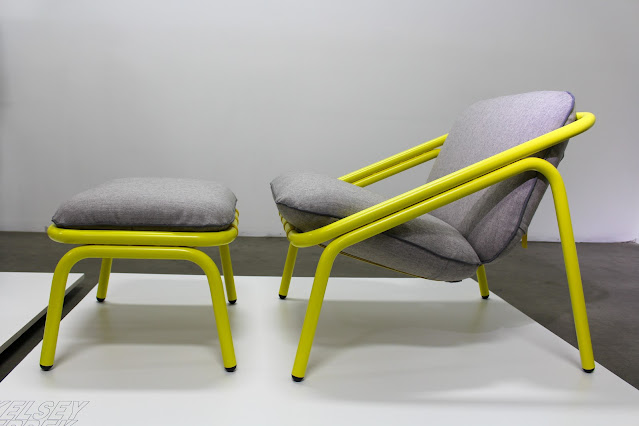Kyambogo University

August 24, 2007
Kampala
Today we visited Kyambogo University . It was larger than we expected with several buildings and many students walking around, almost entirely young men, well dressed. We found the Art and Industrial Design department building which was a single story building with a dusty courtyard filled with wooden student sculptures and canopies for shade. It was getting very hot and humid, and I had a suit jacket on, so I was sweating. I kept thinking, you’re not getting air-conditioning for awhile, so you may as well get used to it. Any northwesterner would have called it unbearable heat and retreated to a cool air conditioned place, but there is no escaping it here.
We met with George S. who is a Senior Lecturer and acting head of the Department, since Catherine Gombe was ill. He was very intent on starting a product design post-bac certificate program there. Their definition of “industrial design” was more like craft that would be made in multiples, but not quite mass production. At least that’s how it sounded. They had done their homework as to what constitutes a product design curriculum and had written out a plan for their one year program.
It looks like it has the important subjects, drawing, design projects, design history, CAD. Although they included something called “Design vernacular” which sounded like the study of their historical and cultural art and craft. It seemed to be important that they include their cultural visual language into their design work. How rich is this possibility! This is something that American programs don’t even discuss. Why is that? Do we not have a design vernacular that is unique to other parts of the world? We seem to just do the design, and not purposely tie it to our history or culture, even though it is connected unconsciously.
So George is interested in me helping to give my “testimony” about product design education to support and inspire their administration, faculty, and students. I wasn’t sure was to expect, or what to present, but I put some slides together and we got set up. They had a well used digital projector and pinned up some paper on a wall to be a screen. The students sat on wooden benches and filled the room, about 40 or 50 altogether. I showed some of my portfolio and talked about the product design process and what attributes are important as a designer. The faculty were most interested in these attributes. I talked about creativity and lateral thinking which they seemed to understand. But what ignited most of the discussion was the bicycle design project.
Everyone snickers a bit when we say Boda-Bodas, because the ones with bicycles are not well respected in the culture. They are poor and dirty and carry around as much loads as possible to earn a few shillings. But they’re also everywhere in kampala , and there’s even more scooter/motorcycle Bodas. Zipping around, in close quarters with taxi buses, cars, SUVs. Literally brushing up against each other the vehicles are inches apart.
When I showed the prototype design to them, the hands shot up with questions. Why is it triangular, why not another shape? Where are the tie-downs? Where is the platform? Is this for rural or urban, because the loads and conditions are different? And so on. All excellent questions. Most of the questions immediately, although indirectly, pointed out the problems with the design. These students were excited, provoked, and maybe a little disturbed. How can some American design for a Boda-Boda in Uganda ? I hadn’t even ridden on one!
After several questions about the design, I realized what was happening. I admitted that there are many problems with this design, and now that I’m here, I see even more. And that’s part of the design process, to try something, to fail, to learn from it and then revise and redesign. But, look what’s happening, they were filled with ideas! They were designing the bike in their own minds. They took on the problem that I failed to solve and were beginning to solve it themselves!
They didn’t lack the creativity, the ideas nor the intelligence, they only lacked the skills of industrial design to carry out and communicate their ideas. So this was the most exciting thing about this visit to Kyambogo. We could have a group a very talented product designers with the right training.
And this is where they need the most help. None of the faculty have an industrial design education or design experience. They either come from an academic art or engineering background. So they would need further training in order to teach product design well.
I later met with the Vice Chancellor of the University, who their “president.” He was very gracious and we discussed the possibility of the program and how it could partner with Ugandan industry. He pointed out that Uganda is still primarily an agricultural economy, but was beginning to become industrialized. There is a bicycle manufacturer in Uganda in fact. But its reputation for quality is poor. He looked at my project and he had his own suggestions for the design. But finally he advised to write up a “memorandum of understanding” between Western and Kyambogo that would connect the schools in a general way. We discussed having their faculty come to visit for training or having myself come back to be a visiting professor.



Comments